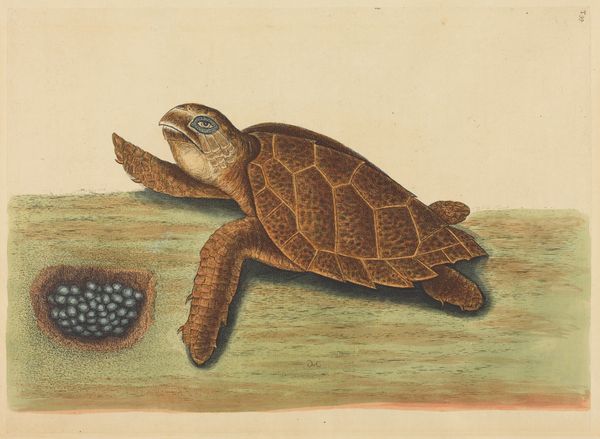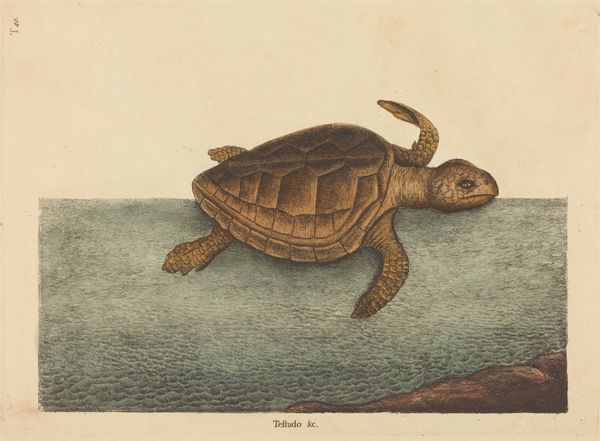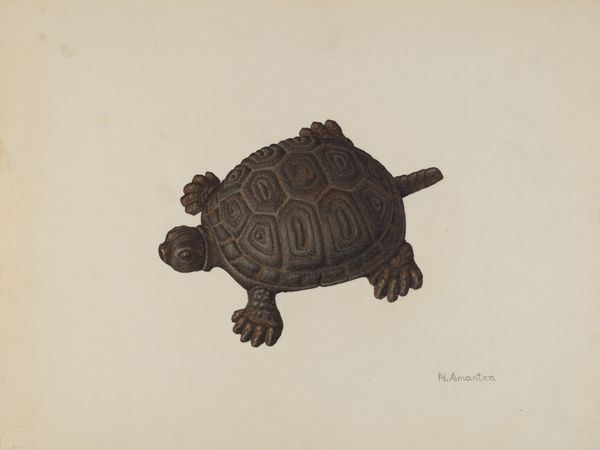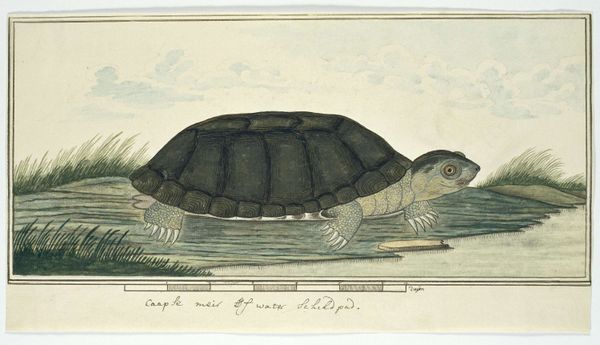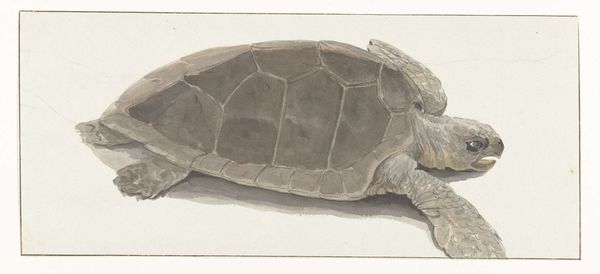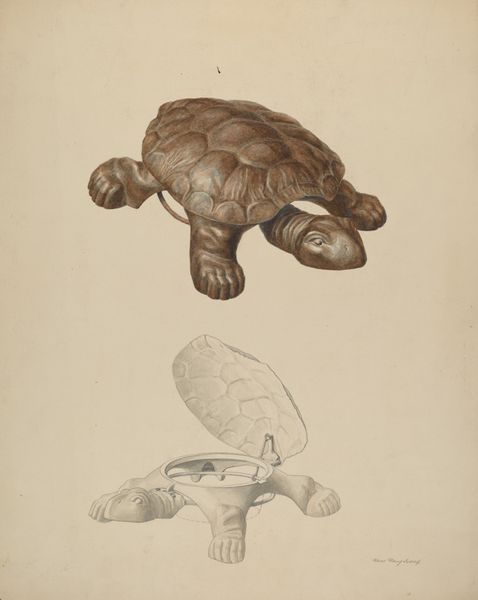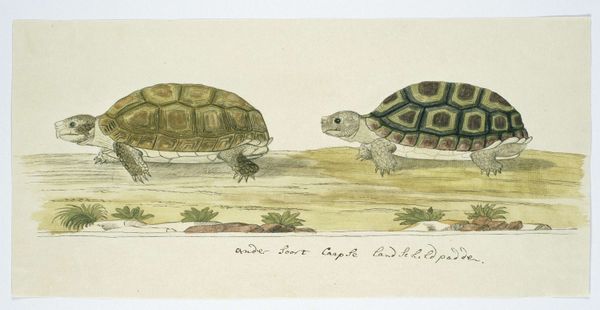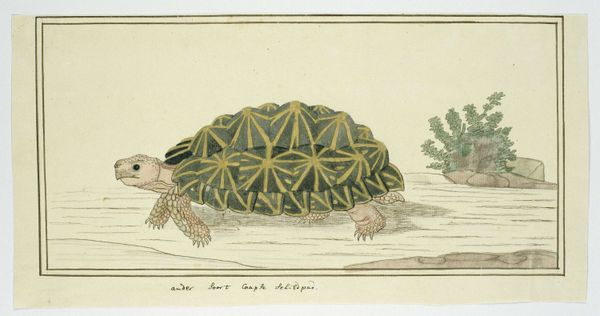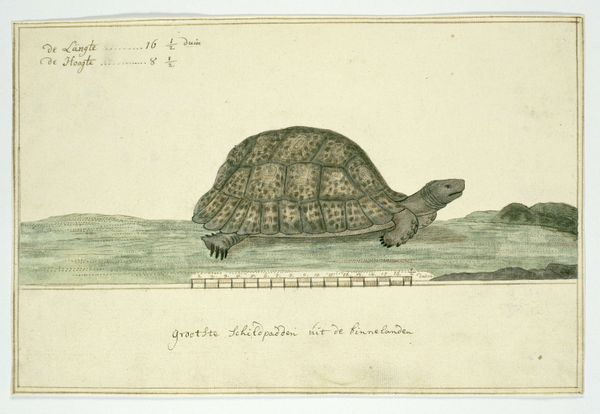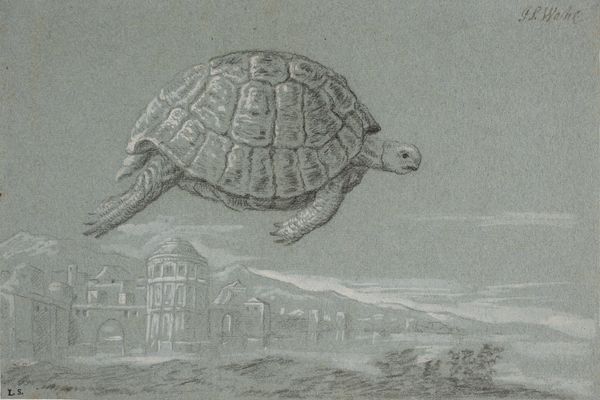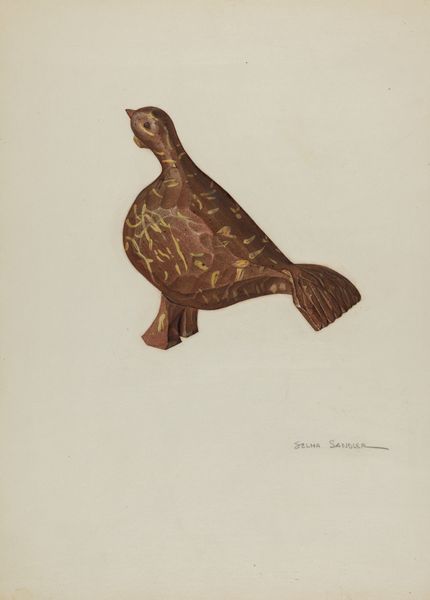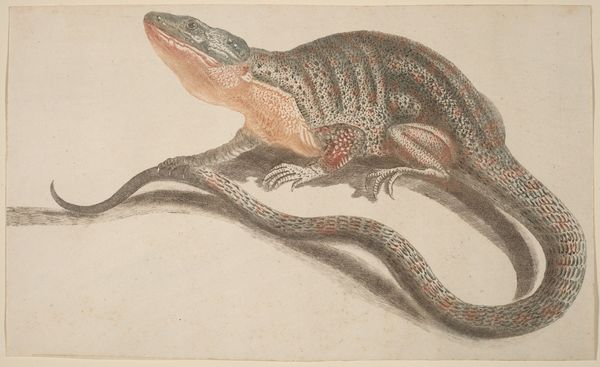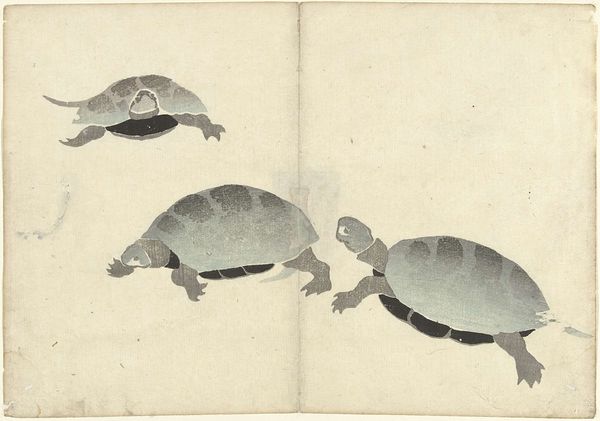
drawing, print, etching, watercolor
#
drawing
# print
#
etching
#
landscape
#
watercolor
#
watercolour illustration
#
naturalism
#
watercolor
Dimensions: plate: 25.7 x 35.2 cm (10 1/8 x 13 7/8 in.) sheet: 38.1 x 54.1 cm (15 x 21 5/16 in.)
Copyright: National Gallery of Art: CC0 1.0
Mark Catesby made this engraving of a Hawks-bill Turtle, using etching and watercolor. Catesby was one of the first naturalists to document the flora and fauna of North America. This print is a superb example of the etching process. Catesby would have coated a metal plate with wax, then drawn his image into the wax with a sharp needle, exposing the metal underneath. The plate was then submerged in acid, which bit into the exposed lines. Ink was applied, filling these etched lines, and the surface was wiped clean. Finally, the image was transferred to paper under great pressure. The finishing touch of watercolor added greater realism. Prints like this one were a crucial means of disseminating knowledge in the 18th century. While seemingly objective, they also reflect period attitudes toward the natural world. Hawksbill turtles, for example, were highly prized for their shells, used in decorative inlays for furniture and small personal objects, feeding a market that continues to this day, bringing the species to the brink of extinction. Understanding the labor and environmental context behind an image like this allows us to see it with fresh eyes, and hopefully, to consider our own impact on the world around us.
Comments
No comments
Be the first to comment and join the conversation on the ultimate creative platform.
